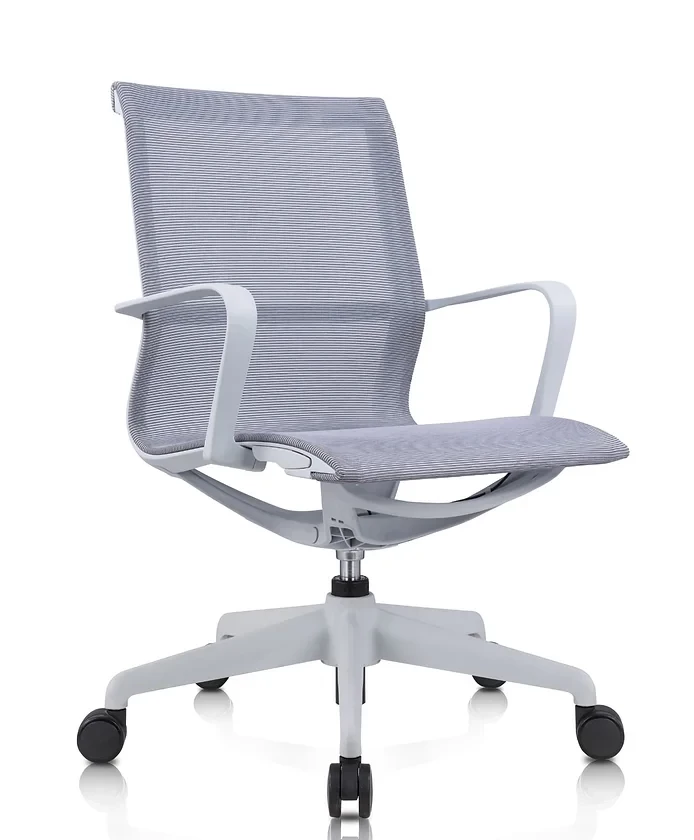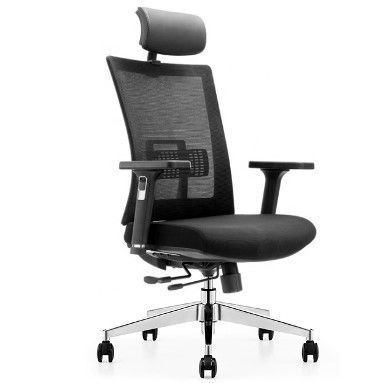
How to Adjust an Office Chair to Fit Your Body Type and Desk Setup
Introduction
Spending long hours at a desk can take a toll on your body if your office chair isn’t properly adjusted to suit your unique body type and desk setup. Whether you're working from home or in a traditional office, it’s essential to set your chair correctly to ensure proper posture, comfort, and long-term health. In this article, we will guide you through the process of adjusting your office chair to fit both your body and workspace, helping you enhance productivity and avoid strain.
1. The Importance of Proper Chair Adjustment
Proper chair adjustment is vital for maintaining a neutral body posture, which can help prevent discomfort, fatigue, and long-term musculoskeletal issues. The right adjustments ensure that your chair supports your lower back, promotes good posture, and minimizes unnecessary strain on your body during long hours of sitting.
2. How to Adjust Your Chair’s Seat Height
The first and most important adjustment to make is the seat height. The ideal height will allow your feet to rest flat on the floor, with your knees at about a 90-degree angle or slightly lower than your hips. To adjust the seat height:
-
Sit comfortably in the chair with your feet flat on the ground.
-
Your knees should be level with or slightly below your hips.
-
Adjust the lever under the seat to raise or lower the chair until you find the ideal height.
This adjustment ensures that your thighs are parallel to the floor, reducing pressure on your knees and improving blood circulation.
3. How to Adjust the Seat Depth
Seat depth refers to how far your chair’s seat extends from the backrest to the edge of the seat. Adjusting the seat depth is crucial to ensure that your back is supported while maintaining proper blood circulation to your legs. To adjust the seat depth:
-
Sit all the way back in the chair.
-
Ensure there is about 2–3 inches of space between the edge of the seat and the back of your knees.
-
If your chair has a seat-depth adjustment, slide the seat forward or backward until you feel comfortable.
Having the right seat depth can help reduce pressure on the thighs and avoid uncomfortable leg positioning.
4. Adjusting the Armrests
Properly adjusted armrests help reduce tension in your shoulders, neck, and arms, especially during long periods of typing or using a mouse. To adjust the armrests:
-
Sit with your arms at your sides and elbows at a 90-degree angle.
-
Adjust the armrests so that they are just below the level of your elbows, allowing your forearms to rest comfortably without elevating your shoulders.
-
If the armrests are adjustable in width, position them so that your arms can rest naturally, without straining your shoulders.
Properly positioned armrests reduce strain on your neck and shoulders, which can significantly improve comfort.
5. Adjusting the Backrest Height and Lumbar Support
Support for the lower back is essential for preventing slouching and promoting a healthy spine alignment. To adjust the backrest and lumbar support:
-
Sit upright in your chair and locate the lumbar support (usually located in the lower backrest).
-
Adjust the height of the backrest so that it aligns with the natural curve of your lower back.
-
If the chair has adjustable lumbar support, position it to provide firm support to your lower spine while maintaining a natural curve.
The backrest height and lumbar support should encourage an upright sitting posture while supporting the lower back’s natural curvature.
6. Tilt and Recline Features for Comfort
Many modern office chairs, including ergonomic designs, feature tilt and recline mechanisms that allow you to adjust the angle of the seat. These features are important for promoting movement and allowing you to change your posture throughout the day. To adjust the tilt and recline:
-
Find the tilt tension control, which allows you to adjust how easily the chair reclines.
-
Use the tilt-lock function to secure the chair at a comfortable recline angle.
-
Ideally, you should be able to recline slightly to take pressure off your spine and improve comfort.
Reclining can be helpful for short breaks or when you need to relax, but always return to an upright position when working.
7. Adjusting the Headrest
A headrest provides essential support for your neck, especially when you need to lean back and rest during a break. To adjust the headrest:
-
Adjust the headrest height so that it supports the middle of your neck.
-
The headrest should provide gentle support to your head, preventing you from straining your neck during breaks or when reclining.
Proper headrest adjustment can help reduce neck stiffness and support a healthy head posture, particularly if you spend a lot of time in video calls or meetings.
8. Positioning Your Desk and Chair Together
After adjusting your office chair, make sure your desk is properly aligned with your chair. A well-adjusted chair is only effective if your desk height complements the chair’s settings. To achieve the ideal desk setup:
-
Your desk should be at elbow height when you sit in your chair with your arms relaxed at your sides.
-
Your forearms should be parallel to the floor when typing or using the mouse, with no need to elevate or stretch your arms.
-
Ensure that there is enough legroom under the desk to allow you to sit comfortably without your legs being restricted.
The correct desk position helps maintain ergonomic alignment and enhances your overall comfort.
9. Maintaining Proper Posture Throughout the Day
Even with an ergonomically adjusted chair, your posture plays a significant role in comfort and long-term health. Keep these tips in mind for maintaining proper posture:
-
Sit with your back against the chair’s backrest and your feet flat on the floor.
-
Avoid slouching or leaning forward; your back should remain straight.
-
Keep your monitor at eye level to avoid straining your neck and upper back.
-
Take regular breaks to stand, stretch, and walk around to reduce muscle stiffness.
Proper posture, combined with the right chair adjustments, will help you stay comfortable throughout the day.
10. The Importance of Regular Adjustments
As your work habits and body change, so should your chair adjustments. It’s essential to periodically reassess your chair settings, especially if you experience discomfort or strain. Small tweaks to seat height, backrest support, or armrests can make a big difference in your comfort level.
Recommended Products

-
Finmon Mesh Office Chair – Grey
The Finmon Mesh Office Chair offers adjustable features like seat height, armrest positioning, and lumbar support, making it an ideal choice for ergonomic seating.
-
Sujaan Mesh High-Back Ergonomic Chair
The Sujaan Mesh High-Back Ergonomic Chair provides full lumbar support and adjustable settings, perfect for long hours of work in any office setup.
Final Thoughts
Adjusting your office chair to fit your body type and desk setup is crucial for achieving comfort and preventing strain during long hours of sitting. By making the necessary adjustments to seat height, backrest position, armrests, and lumbar support, you can optimize your posture, enhance productivity, and promote overall well-being. Regularly reassessing your chair settings ensures that you maintain an ergonomic workspace that supports your body’s needs.
FAQ
How do I know if my office chair is adjusted properly?
Your chair should support your lower back, and your feet should rest flat on the floor with your knees at a 90-degree angle. Your arms should be at a comfortable angle when using your desk.Can I adjust the lumbar support on any chair?
Not all office chairs have adjustable lumbar support. However, many ergonomic chairs do. If your chair lacks lumbar support, consider adding a lumbar cushion.Why is seat depth important in chair adjustment?
Seat depth ensures that your thighs are supported without restricting blood circulation. Proper seat depth prevents pressure behind your knees and promotes a more comfortable sitting posture.
Should I adjust my chair every day?
It’s a good idea to adjust your chair settings periodically to ensure they continue to match your body’s needs. Minor adjustments based on posture changes can improve comfort throughout the day.


